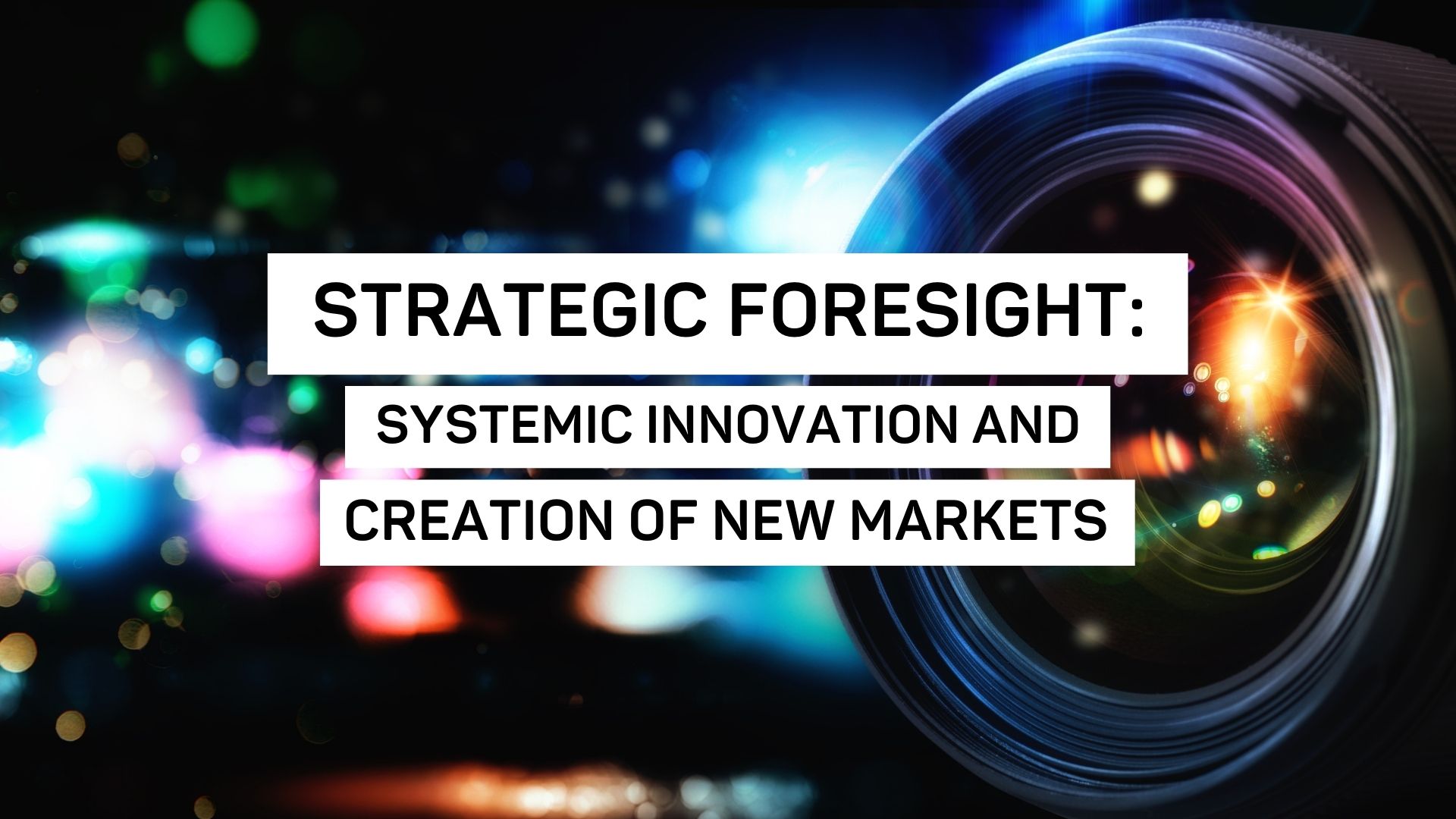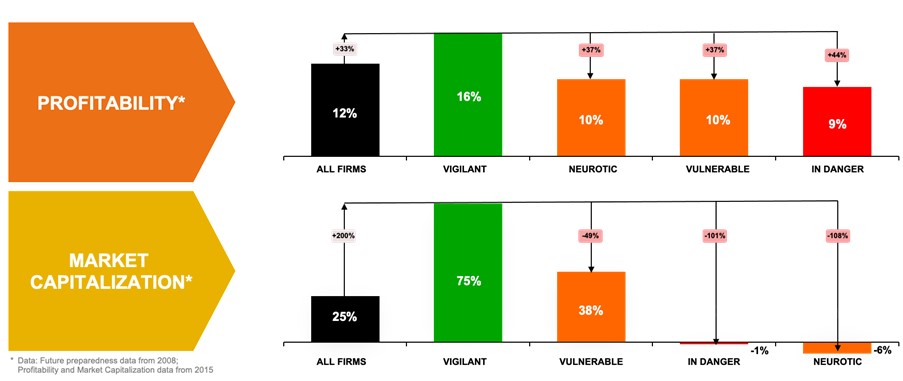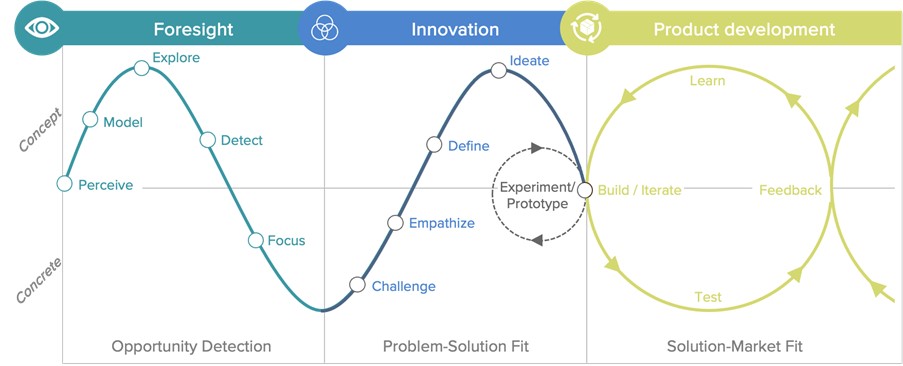
Strategic Foresight: Systemic innovation and creation of new markets
Learn how leadings firms are leveraging foresight to create breakthrough innovations.
René Rohrbeck and Tobias Heger explain how to leverage foresight to foster innovation with three key recommendations to start today.
That companies like Apple, with 50% of the global market for smartwatches, or Vorwerk, with the Thermomix, have established their product categories is no coincidence. The ability to create new markets and systematically develop innovations in new product categories is rare, but it can be learned.
Put simply, it’s like surfing. Those who want to be successful have to be able to anticipate waves, need to develop the necessary skills to ride the wave, be ready to seize the right moment, and emphatically claim the window of opportunity as soon as it opens.
As with surfing, linking strategic foresight (anticipating waves) to innovation management (riding the wave at the right time) is not easy to learn. But the companies that do it can expect above-average returns. For example, in a longitudinal study stretched over seven years, we observed that future-prepared companies beat their less well-prepared competitors with around 200% higher growth and 33% higher profitability (Rohrbeck & Kum, 2018).

But how does one build such future preparedness?
Actively draw attention to what’s new
First, we have to realize that it is difficult for everyone to imagine something completely new. In addition, success does not only depend on recognition but ultimately on the necessary investment decisions being made and implementation being pursued with sufficient vigor. In practice, this ultimately means that profits have to be diverted from established business units to new ones – profits that the established business unit would also like to use itself to defend its traditional business.
From foresight to market success
To systematically translate foresight into innovations, we have developed a model that structures how to prepare for the future and can be integrated with existing innovation processes (see Fig. 2).

In the first phase, which is characterized by foresight methods, the first task is to identify the drivers of change, to recognize the waves of change, and to understand possible development paths. Our company has to deal with what may have an impact on its future ecosystem. This goes far beyond classic, often technology-driven factors in the automotive industry such as downsizing, hybrid technology, and the regulation of combustion engines. It includes, for example, artificial intelligence, 5G, alternative battery technologies, new players and competitors, as well as mobility behavior and preferences of potential users.
Through scenario analysis, the space of plausible developments can be mapped and made plannable through concrete images of the future. In this way, companies can proactively prepare for alternative market environments, identify preferred positions and plan target images.
After high-potential business fields and opportunities have been identified, the second phase focuses on the problem-solution fit. Many methods of innovation management, including newer ones such as user-driven innovation, design thinking, and design sprints, address this particular aspect. In contrast to the usual application of these methods, a company has to learn to plan without observable and measurable customer needs. In order to provide a planning basis nonetheless, our company works with the lead user approach. Through cooperation with particularly progressive customers, needs are specified, e.g. thermal management when charging the vehicle, when the vehicle is stationary, in various traffic situations, etc. With the classic customer dialogs, the needs analysis would not have been sufficiently specified and investment funds would not have been approved. In some promising opportunity areas, it is not even clear who will take on the customer role in the future. Future Experience Groups, which determine future needs based on scenarios, can provide a remedy here.
Three recommendations to take a start: radar sprint, scenario sprint, innovation sprint
Anyone who builds the ability to foresight in their organization needs quick success in order to establish the new methods and tools. However, success in innovation and the development of new markets rarely comes overnight. Here are our three recommendations to quickly learn and establish the effectiveness of Foresight.
- The radar sprint: In radar sprints, often only for a week, organizations can map the known drivers of change. This not only creates a trend radar but also shows the channels through which future-related information reaches the company and where ‘sensors’ may need to be added.
- The scenario sprint: Innovating in new markets requires a willingness to understand uncertainty as an opportunity and to use it systematically. These not only serve as a context for defining product and service ideas but also promote the company’s ability to proactively deal with uncertainty and potential.
- The innovation sprint: If scenarios or drivers of change have already been identified at the company level, innovation sprints or hackathons are ideal to derive innovation potentials or specific product approaches. In the end, not only do new product and service ideas emerge but also teams are often already formed for implementation.
Foresight is becoming increasingly important because innovation life cycles are getting shorter, because it is becoming easier and easier to copy successful products and even business models, and because digitization is eroding the traditional technological lead of many corporates. Therefore, today it is important not only to face competition at the technology and product level but also to systematically increase the level of organizational skills, innovative strength, and strategic agility.

